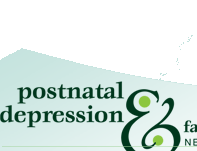 |

CLOZAPINE
This section is designed to inform professionals
(Consumers, see Clozapine Fact Sheet)
Available as Clozaril, Clopine.
- used to treat schizophrenia and less commonly bipolar disorder.
- not first line treatment because of the potential for agranulocytosis and the close monitoring required because of this.
- problematical side effects can be weight gain, sedation and excessive salivation.
- may be useful when people have not responded to a variety of other antipsychotics.
Use in Pregnancy
Category C
- There is no conclusive evidence about the relative safety of Clozapine in pregnancy
- Animal studies have suggested that Clozapine is safe during pregnancy (Iqbal, 2003)
- Use during pregnancy in women has been described in several case studies. One study reported neonatal convulsions and floppy baby syndrome in women taking clozapine during pregnancy (Yaegar, 2006). The successful use of Clozapine was described in a pregnant woman with schizophrenia (Yogev, 2002). Although the baby was a good weight and healthy, a variable heart rate on the CTG before delivery was interpreted as possible CNS dysregulation caused by Clozapine. Another case reported a successful pregnancy outcome for a woman on Clozapine although the child later developed speech problems (Mendheker, 2007).
- Clozapine had also been implicated in two pregnancies associated with gestational diabetes (Nguyen, 2003; Dickson, 1998).
.
Use in Breast feeding
Category L3
- Since Clozapine has been associated in adults with the rare side effect of agranulocytosis (a potentially dangerous reduction in the number of white blood cells) this has led to concerns about monitoring breastfed infants.
- A follow up of a breastfed infant of a mother on Clozapine reported a healthy baby at 6 months (Barnas, 1994).
- In general extreme caution is advised with careful blood monitoring of infants if it is considered.
References
1. Barnas, C., Bergant, A., Hummer, M., et al, (1994). Clozapine concentrations in maternal and fetal plasma, amniotic fluid, and breast milk. American Journal of Psychiatry, 151, pp 94-946.
2. Dickson, R. A., & Hogg, L. (1998). Pregnancy of a Patient treated with Clozapine. Psychiatric Services, 49 (8), pp 1081-1083.
3.Iqbal, M. M., Rahman, A., Husain, Z., et al (2003). Clozapine: A clinical review of adverse effects and management. Annals of Clinical Psychiatry, 15 (1), pp 33-48.
4. Mendheker, D. N. (2007). Possible delayed speech acquisition with Clozapine therapy during pregnancy and lactation. Journal of Neuropsychiatry Clinical Neuroscience, 19 (2), pp 196-197.
5.Nguyen, H. N., & Lalonde, P. (2003). Clozapine and Pregnancy. Encephale, 29 (2), pp119-124.
6. Yaegar, D., Smith, H. G., & Altshuler, L. (2006). Atypical antipsychotics in the treatment of schizophrenia during pregnancy and the postpartum. American Journal of Psychiatry, 163 (12), pp 2064 – 2070.
7. Yogev, Y., Ben-Haroush, A., & Kaplan, B. (2002). Maternal Clozapine treatment and decreased fetal heart rate variability. International Journal of Gynaecology and Obstetrics, 79, pp 259-260.
|
 |






